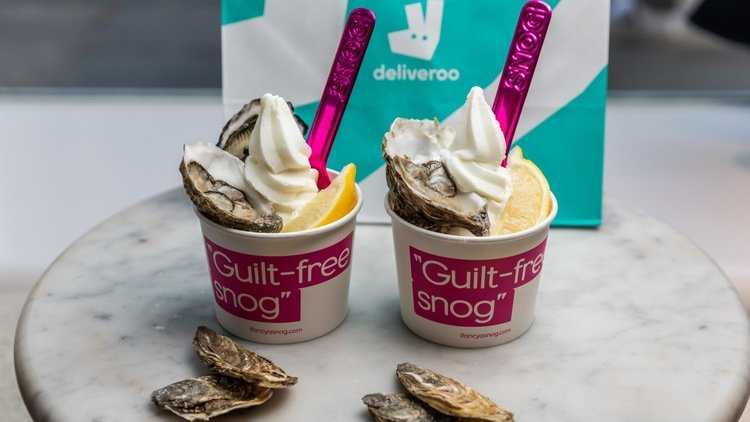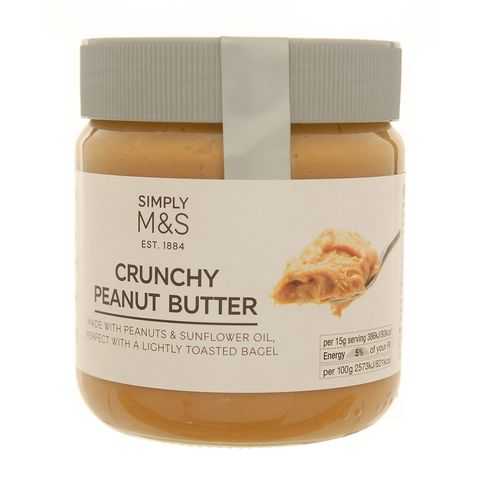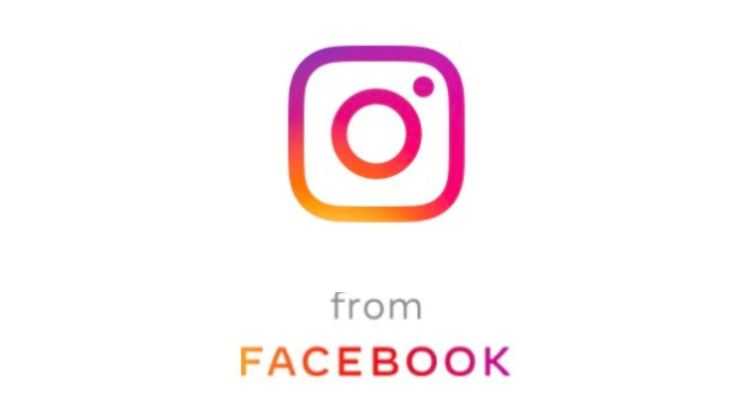The definitive guide to product partnerships
- Publication date
- Author
- Imogen Beech
- Reading time
- 10 minute read
A lot of the time, strategic partnerships involve two companies working together to market their brands or products. But why not go a step further and team up with a partner brand to launch new products or improve existing ones?
That’s exactly what a joint product partnership is about. In fact, some of our favourite brands have done just that. Does the combination of Nike and Apple ring any bells? How about Uber and Spotify? Facebook and Instagram? These are just a few product partnership examples that have caught the public’s imagination. But first things first...
A joint product partnership is when two (or more) brands work together to launch a new product or improve an existing one.
This can take loads of different forms. But brands wanting to form a joint product partnership usually do so for one of two reasons:
That said, what the product partnership actually looks like can vary quite a bit. We’ve highlighted some common scenarios you’re likely to see in a product partnership below.
Many joint product partnerships see a primary brand utilising the services or technology of a secondary brand in order to better its product offering.
This often involves a large tech company teaming up with a smaller tech company or startup that can fill a gap for them. But it can also involve two brands of a similar level working together to create a new product that leverages one another’s audiences and brand reputations.
Let’s take a look at each of those scenarios.
Large companies often have a lot of processes and protocols in place that stop them from being able to move quickly. But in a fast-moving market, they need to be continuously working to expand and improve their offering in order to stay ahead of the competition.
That’s where product partnerships come in. By using the technology or services of smaller, more agile companies and startups, big brands can seize new opportunities more quickly. Not only that but as Mark Sochan points out in The Art of Strategic Partnering, it costs 5 times more to attract new customers than to sell to existing ones. Releasing new products and features aids retention and allows brands to continue earning revenue from existing customers.
Meanwhile, the smaller brand also benefits. Often, it will get support from the primary brand in the form of resources such as finance, mentoring or personnel. It may also get a boost to its reputation and awareness by being associated with the larger brand and benefiting from the media coverage that may come with that.
Product partnerships of this kind are common in developing new concepts that are technically and operationally challenging, such as flying cars (eVTOLs), self-driving cars and space exploration. In these spaces, it's hard to be an expert in all the different technologies required to make a product work. Teaming up allows brands to share expertise to advance more quickly, and to share the (often hefty!) costs involved. Our piece on partnerships shaping the future of business has more.
Some of our favourite product partnerships that see one brand using another’s technology or services have taken place between two similarly well-known brands that have collaborated to make a new and exciting product.
One such example is Apple and Nike’s collaboration on Nike+. This involved Apple (the secondary brand) providing Nike (the primary brand) with a wireless chip that could fit into a pair of trainers, allowing the wearer to track and measure their activity during exercise. Since then, the pair have continued to collaborate on similar wearables, such as the Apple Watch Nike.
Although the two brands operate in different markets, by collaborating they were able to create a forward-thinking product that helped users in their day-to-day. Not only that but since both brands are big household names, they were able to leverage one another’s reputations to tap into new audiences, boost brand awareness and gain a significant amount of media attention. In this sense, the partnership could also be seen as a successful example of co-branding.

These kinds of partnerships are also popular when two brands want to team up to leverage seasonality with a seasonal partnership. By using both brands' unique skills to team up on a new product that's appropriate to the season, brands can create a buzz around their activities and use that to boost brand awareness or even increase sales. One great seasonal partnership example of this kind is Deliveroo and Snog's collaboration on Oyster Fro-Yo, the aphrodisiac the pair concocted and sold exclusively for Valentine's Day.

With white labelling, a primary brand still utilises a secondary brand’s technology or services. But this time, the primary company rebrands the product to make it look as if it belongs to them. This is essentially a form of licensing (another type of strategic partnership to get your head around!) that enables one brand to use another’s product without crediting them.
White labelling can be a really easy way for the primary brand to expand or improve its product offering without having to invest any time or resources into actually creating the product – and without having to share the limelight with a partner. Meanwhile, the secondary brand benefits from getting paid for the use of its product.
In a sense you could see this as akin to outsourcing, as the primary brand is effectively using a secondary brand's manufacturing skills to fill a gap in its own services – perhaps as a way of saving time and money, or as a way of gaining expertise they don't have in-house.
White labelling also often goes hand in hand with reselling. After rebranding a product, it’s usual for the primary brand to go on to sell it to an end consumer.
A really simple example of this is a supermarket’s ‘own brand’ products, like M&S’s ‘Simply M&S’ range. Although these products carry M&S’s branding, this doesn’t mean the chain has made them. Instead, it will work with many individual companies that are happy to put the supermarket’s branding on the packaging so that M&S can pass them off as its own.

Many insurance products are similarly white labelled and resold. Often when you search for insurance, you’ll get offered the same insurance product by a number of different providers. You might not realise this until you come to buy the product and see the underwriter’s details listed.
That said, white labelling doesn’t always involve reselling – the primary brand may simply be looking for a solution that can create a smoother experience for customers who are already utilising its product.
For instance, a corporate event planner organising an online conference will need a virtual event platform to host it on. But it could be confusing to sell tickets to an event that has the platform’s branding all over it. By choosing a white-labelled option, the planner will be able to make sure that their own branding is centre-stage, creating a smoother and more pleasant experience for attendees at the same time as aiding brand awareness.
Product partnerships aren’t always about creating new products and features. They can also be about improving the user experience by allowing products from different brands to work better together.
This is especially common in SaaS businesses where products from multiple brands need to work together to give users a smooth experience. Often, this is made possible through API integrations, which involve devices and applications sharing data to make our lives easier.
For example, have you ever clicked ‘Log in with Google’ to sign up with a website or online service? There are tons of websites that offer you the chance to do this in order to make logging in quick and avoid you having to memorise hundreds of different passwords – Asana is just one.

Despite what you might think, these websites aren’t actually logging into your Google account – instead, they’re just using the platform’s API to verify it’s you.
Similarly, have you ever paid for a product using PayPal? Tons of online retailers give consumers the option to pay this way because it makes checking out super easy and (according to Paypal) improves conversion rates.
These are just a couple of examples of how brands regularly work together in an ecosystem to improve consumers’ lives behind the scenes. In fact, McKinsey & Company predicts that nearly a third of total global sales will come from ecosystems by 2025! (check out our piece on strategic partnership stats for more fun facts about ecosystems.)
That said, not all integrations of this kind work behind the scenes. Some brands attempt to create more of a buzz by bringing their collaborations into the public eye, such as Uber’s partnership with Spotify.
This pair linked their apps so that Uber users could have their Spotify playlists played during their Uber rides. The collaboration solved a very real problem (how many times have you ridden in a taxi to music you don’t like?!) while raising a ton of publicity through a co-branded marketing campaign the pair titled ‘a soundtrack for your ride.’

Product extension mergers (also known as congeneric mergers) are the most complex and legally entwining of all the product partnership types. Essentially, they involve two companies merging to become one.
These partnerships are very common in the software industry where companies may offer similar (although not necessarily competing) products.
For example, if one company offers virus protection software and another offers financial protection software for personal financial data, it could make sense to merge the two companies. After all, the same customer would benefit from both products, which gives the partners plenty of opportunities to create add-ons and extensions once they acquire a customer.
That said, if both companies wish to retain their autonomy, there are ways to benefit from those shared opportunities that are less legally entangling. For example, a distribution marketing partnership involving bundling (where products from different brands are sold together) could also provide a boost to both brands’ reach and acquisition.
While product extension mergers are typically used for complementary products that fill a technology gap, they’ve also been known to be used for competing products, to stop a potential threat. For instance, Facebook paid $1 billion to acquire Instagram in 2012 (according to screenrant.com), although the brand has since faced criticism for monopolisation.

If you’ve previously read our guide to co-branding partnerships, chances are you’ve been sitting there reading this and thinking ‘Huh? Product partnerships sound an awful lot like co-branding.’ And you’re right!
One particular kind of co-branding – product-based co-branding – can look pretty much identical to some product partnerships. It’s when two companies collaborate to create a product that incorporates both their identities. Sounds familiar, right?!
But here’s the difference as we see it: the focus of product-based co-branding is on marketing. Yes, partner brands are still coming together to create a new product, but the product itself is used as a kind of marketing campaign.
Think of Betty Crocker’s brownie mix with Hershey’s Chocolate Syrup. Or Dell’s laptops with Intel processors. These are examples of ‘ingredient branding’ (a type of product-based co-branding) where the partner brand’s name and reputation is used to drive sales.
Don’t get us wrong, joint product partnerships can leverage a partner’s reputation too. But it would probably be fair to say that product-based co-branding is a type of product partnership that focuses on the marketing side of things more than on the user experience side of things.
On the other hand, product partnerships are first and foremost about expanding a brand’s product. This can have a range of benefits, including an uptick in sales, but the focus is slightly different. That said, there’s no real reason why a product partnership can’t tick both boxes!
Looking to start a product partnership? Wondering how to go about it? Here are our recommended steps for kicking things off when it comes to getting a product partnership agreement off the ground.
--
So, what do you think? If your brand could do with filling a gap in its product offering or benefiting from a partner brand’s distribution channels, a product partnership could be exactly what you’ve been searching for. Yes, they’re not always easy to pull off – but if it was easy, it just wouldn’t be worth doing.
That said, there is one thing that could save you a ton of time and stress in your hunt for product partners: Breezy! Just book a demo to get started and we’ll help you uncover hundreds of relevant partnership opportunities in no time.
Imogen is a copywriter and content writer with over two years’ experience writing about the exciting world of strategic partnerships, as well as running her own business. She loves learning about new topics as she writes, and has enjoyed penning articles on industries ranging from mortgages to events, theatre to home improvements and everything in between.
View more by Imogen Beech